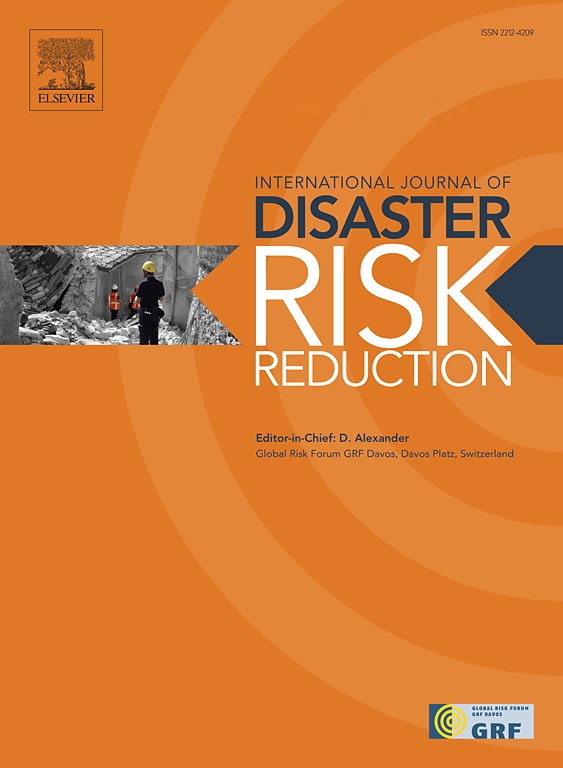Risk mitigation: Numerical analysis of COVID-19's impact on major global construction economies
IF 4.2
1区 地球科学
Q1 GEOSCIENCES, MULTIDISCIPLINARY
International journal of disaster risk reduction
Pub Date : 2025-04-07
DOI:10.1016/j.ijdrr.2025.105471
引用次数: 0
Abstract
Learning from the past is a key risk mitigation strategy, as it involves analysing previous experiences to identify mistakes or successes. By understanding these lessons, organisations can take proactive measures to address potential risks in the future, minimising both their likelihood and impact. By using high-performance computing, this study combines economic and pandemic predictors to enhance the understanding, modelling and quantification of disaster risks within major global construction industries during COVID-19. By systematically identifying key variables and developing a robust risk index through predictive modelling and empirical validations, the research presents the relative risk index for managing crisis responses and resilience strategies at global and continental levels. The framework used here aligns with the globally recognised disaster risk management initiatives, such as the Sendai Framework, and leverages real-time data and automation to facilitate proactive, data-driven decision-making in the face of global crises. Using the Arellano test specification, the study identified 10 significant explanatory variables pertaining to the productivity of the construction industry. FDI, share prices and total spending had positive regression coefficients. An increment in such explanatory variables is beneficial for the productivity of the construction industry. The analysis of the causal effect found that employment rate, inflation, pandemic growth, reproduction number R and the transmission rate had a negative link with the construction industry productivity. This study remarks that when excluding statistically independent pandemic variables, the model did not obtain valid regressors, emphasising the importance of accounting for both the economic and pandemic data for the causal effect detections.
求助全文
约1分钟内获得全文
求助全文
来源期刊

International journal of disaster risk reduction
GEOSCIENCES, MULTIDISCIPLINARYMETEOROLOGY-METEOROLOGY & ATMOSPHERIC SCIENCES
CiteScore
8.70
自引率
18.00%
发文量
688
审稿时长
79 days
期刊介绍:
The International Journal of Disaster Risk Reduction (IJDRR) is the journal for researchers, policymakers and practitioners across diverse disciplines: earth sciences and their implications; environmental sciences; engineering; urban studies; geography; and the social sciences. IJDRR publishes fundamental and applied research, critical reviews, policy papers and case studies with a particular focus on multi-disciplinary research that aims to reduce the impact of natural, technological, social and intentional disasters. IJDRR stimulates exchange of ideas and knowledge transfer on disaster research, mitigation, adaptation, prevention and risk reduction at all geographical scales: local, national and international.
Key topics:-
-multifaceted disaster and cascading disasters
-the development of disaster risk reduction strategies and techniques
-discussion and development of effective warning and educational systems for risk management at all levels
-disasters associated with climate change
-vulnerability analysis and vulnerability trends
-emerging risks
-resilience against disasters.
The journal particularly encourages papers that approach risk from a multi-disciplinary perspective.
 求助内容:
求助内容: 应助结果提醒方式:
应助结果提醒方式:


